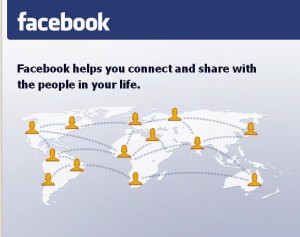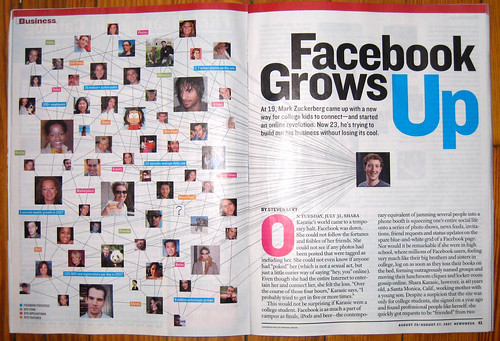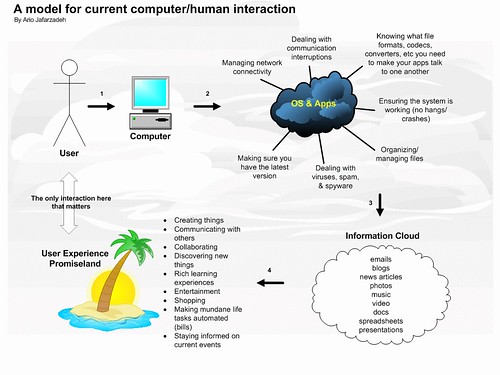College Admissions
College Admissions
Preparing for College
The Best College for You
What to Study
Applications
Education Options
Education Options
Private Universities
Public & State Universities
Community Colleges
Scholarships
Scholarships
African American Scholarships
Latino Scholarships
Native American Scholarships
Women Scholarships
College Grants
College Grants
Federal Grants
Merit Based Grants
Need Based Grants
Student Loans
Student Loans
Federal Student Loans
State Student Loans
No Co-signer Student Loans
Bad Credit Loans
Student Loan Consolidation
College Survival
College Survival
Financial Aid Tips
The Digital Student Blog
If you are not familiar with Cat Stevens and his famous song, Father and Son, you should be. It is filled with many short, meaningful lyrics such as:
You’re still young
That’s your fault,
There’s so much you have to go through.
Gaining Respect in the World of Work
Those about to venture beyond the campuses they have called home for the past four years may well be entering the harshest work environment since the great depression. Jobs are exceedingly difficult to come by – for the better part of several months, nearly as many people have been laid off from work each and every week (600,000+) as will graduate from college this year (700,000+).
So the chances of finding work are extremely challenging. If you do find someone willing to give you a shot, be ready for some good old-fashioned jealousy on a number of fronts. After all, who are you, still wet behind the ears, to be so lucky as to be awarded an opportunity in this job climate?
Gaining respect has never been easy for someone fresh out of school. People always look at the newbie with a raised eyebrow and a not so subtle, prove it to me attitude.
But in 2009, your first days may well be met with an even stronger response, one that features more than a tad of resentment. To gain respect in today’s job setting, you will need to make all the right moves.
Origins of Respect
First off, respect doesn’t come from a title or because you have been assigned authority. In fact, if you are a newbie, the fact that you have been given a title by your boss could make your first days even more challenging.
Respect is earned and gained over time. It is given to folks who do their work well and consistently demonstrate they can become an integral part of a team. Perhaps most importantly for someone young and new to the company, respect is given to those who make others feel like they are an integral part of the team.
However, generally speaking, it is only over time, after you prove you can handle the challenges, that you will earn the trust and respect of those around you.
That said, here are three things to keep in mind:
A. Humble Beginning
Remember, you only get one chance at a first impression. To gain respect quickly, begin by acknowledging you are the newbie. Whatever you do, don’t give folks the impression that you are one of those stereotypical, brash, spoiled, over-confident, know-it-all’s college kids.
 Because that is what they think you will most likely act like.
Because that is what they think you will most likely act like.
Instead, be polite and respectful of those who have established experience. Study your environment carefully and be sure to ask questions and seek the advice of others.
The first real sign of maturity is the acknowledgment that you do not know it all, not by a long shot. And demonstrating maturity is the first way to begin earning the respect of colleagues.
B. Demonstrate Good Work Habits
Without being flashy, model what it means to be a good worker. Show up early or at worst, on time. Stay late.
Take your break only for as long as is permitted. If lunch is a half hour, take 28 or 29 minutes max.
Be attentive in all meetings. Listen carefully and avoid being the first to speak about issues. Instead, listen to what everyone else has to say before venturing your opinion.
Veteran employees will think of things you will never have even considered. Waiting before you speak will ensure that you will not commit the most famous of faux pas: putting one’s foot in one’s mouth.
Join work groups and take advantage of every seminar available. Be careful not to take on more than you can handle but being a part of a work group will help you get acclimated to the company much more quickly while attending seminars will ensure your knowledge of industry practices is totally up-to-date.
C. Help Others
 Find ways to help other company employees be successful. If you have an idea, talk about it with a pertinent colleague. Collaborate with them instead of trying to make the idea solely your own.
Find ways to help other company employees be successful. If you have an idea, talk about it with a pertinent colleague. Collaborate with them instead of trying to make the idea solely your own.
If a colleague asks for assistance with a task, take time from you schedule to give it your focus and your best effort. If after careful examination you cannot help, admit it. Most people will see right through any youthful attempt to blow smoke by them.
If you can help, be sure to come across as offering suggestions and advice for consideration. Avoid any language that would give anyone the impression you are telling them how a specific task ought to be done.
Ultimately, Avoid Being an Idiot
No one sums this respect notion up better than Chuck Westbrook, who has his list of “6 Ways to Get Respect Quickly, Despite Your Youth.” Number six puts it in words we can all fully understand:
“Avoid being an idiot,” writes Chuck. “Subtle advice, no? Anyone who’s spent any amount of time in an office has seen talented people who can’t stop shooting themselves in the foot with stupid habits. Improper attire, showing up late, inappropriate jokes, failure to stop talking about oneself… The list goes on and on. Exercise good judgment and at least be aware of the norms in your workplace.”
He goes on to add that “you need to prove you can follow the rules before you can get away with breaking them.” We would suggest that you take that one step further and forget about getting away with breaking any rules.
Because as Chuck concludes:
“It’s hard to get respect when you’re fired.”
When it comes to graduation events, most of the media focus the past couple of weeks has been on President Obama’s appearance at Notre Dame. The decision of school officials to invite the president to deliver the commencement address and award him an honorary degree was clearly not sitting well with many Catholics.
Given the president’s views on abortion, protesters have been reportedly out in great numbers. In addition, one person set to be honored offered the greatest of protests as she opted to decline a prestigious award.
Less Media Coverage
Lost amidst the hoopla was a mind-numbing story from another prestigious college, Morehouse in Atlanta, Georgia. In yet another of those situations where the term justice seems to have totally taken a hiatus, about 500 students were set to graduate without such protests.
This despite the fact that one perpetrator, Joshua Brandon Norris, was graduating and his victim, Rashad Johnson was not.
 The back story represents one of the more troubling tales we have read about in years. Norris was graduating despite the fact that he had shot Johnson three times.
The back story represents one of the more troubling tales we have read about in years. Norris was graduating despite the fact that he had shot Johnson three times.
That’s correct. Norris had pulled a gun on Johnson in an altercation outside a night club in 2007. A scuffle ensued and Norris shot Johnson three times.
The Plea Deal
Facing one count of aggravated assault with a deadly weapon and second count for possession of a firearm during the commission of a felony, Norris attended a court hearing in January. There he was offered the plea deal by the prosecutor.
Norris pleaded no contest to the first count and the second charge was dropped. He ultimately received six years of probation, a $1,000 fine and 240 hours of community service.
Somehow, the incredible plea deal was also accepted by the presiding judge.
And since he avoided any jail time (he faced up to 20 years), he was able to remain in school to complete his degree. In fact, the plea deal mandated that he remain in college and complete his college degree.
Not a School Issue
Understandably, Johnson and his family were astonished to learn of the deal. Johnson, one bullet still in his left leg, had left Atlanta and gone home to California to be with his mom and to recover from his injuries.
Fahizah Johnson, the victim’s mom, took issue with the school.
“I am so disappointed because Morehouse has been an institution in my family for three generations,” she told CNN. “This guy shot my son three times, and he’s still in school? He’s still a student with other students?”
 While CNN also seems to take exception to the actions of Morehouse, the school is not at fault. The incident took place off school grounds and the legal verdict essentially mandated that Norris attend school.
While CNN also seems to take exception to the actions of Morehouse, the school is not at fault. The incident took place off school grounds and the legal verdict essentially mandated that Norris attend school.
Therefore, there was simply no recourse for the school. Refusing to let Norris return to school would not have been legally supportable regardless of the actions he took.
The issue was an appalling set of decisions by the prosecutor in the case.
No Longer a Morehouse Man
According to CNN the prosecutor of the case has since resigned. His boss insists he would have been fired had he not quit.
Little has been said about the judge’s role.
The one step Johnson can take is to separate himself from the school and the city. Despite the school being a longstanding family tradition, Johnson has done just that.
He is now attending Sacramento City College and plans to attend law school after he graduates in 2011.
To enhance one’s college admissions chances, there once existed a longstanding belief that the more activities a student could list on their application the better. However, in recent years that myth has been clearly debunked.
An unending list of activities is now seen as potentially backfiring, being viewed primarily as a list constructed so as to impress college admissions officers. Instead, most admissions officers see such lists as demonstrating that a student has no real idea what they are truly interested in.
Instead, today’s teaching point for students is to become deeply involved in one or two interests. Spending time on certain activities demonstrates a passion for the activity. Moreover, a resume built on a record of the student’s involvement in that activity will go a long way towards helping admissions officers learn who you are, a critical component in the decision process.
Leadership Component
 In addition to extensive involvement in one or two activities, the general sentiment is that developing a leadership role within these endeavors is a key component of rounding out that resume. That idea is accurate, a leadership position within one of these activities can be very helpful during the admission selection process.
In addition to extensive involvement in one or two activities, the general sentiment is that developing a leadership role within these endeavors is a key component of rounding out that resume. That idea is accurate, a leadership position within one of these activities can be very helpful during the admission selection process.
But in true American-selling fashion, the importance of leadership credentials has led to a whole new industry, one that is formed around the idea of leadership training.
Diana Jean Schemo recently took a look at this industry for the New York Times. Her piece, “Congratulations. You Are Nominated. It’s an Honor. (It’s a Sales Pitch.)” clearly articulates that students need to be aware of a number of come-ons that are nothing more than sales pitches.
And they represent sales pitches of the worst kind: playing on a student’s inner emotions and their goals of higher education.
They come in the form of a letter that appears to be awarding the student recognition. As the title of the article suggests, these letters begin with congratulations, assuring the student they have been selected based on their record of achievement.
Specifically, they invite students to leadership seminars, offering them a chance of a “lifetime advantage” and “valuable addition” to his/her resume. The letter uses words like “elite,” “distinguished,” and “select.”
The power of positive feedback makes the recipient feel “unique and gifted” but then plies on that new push: the one that says students need to develop their leadership skills if they want to assure themselves the best chance at admissions.
The seminars are real and many students decide to attend. And all-in-all, participants who attend report they are satisfied with the experience. Many also later recommend friends.
Unfortunately, according to Schemo, these seminars appear to be nothing more than a marketing scam. The number of students who attend at the prices set by these companies allow these for-profits to make significant sums of money off the students.
In most cases, parents pay $2,000 to $3,000 for students to attend these multi-day programs that turn out not to be as elite as they portray themselves to be.
For one particular conference cited by Schemo solicitations “begin filling mailboxes, virtual and real, as soon as children reach middle school, and continue coming through college. In a variety of settings, from Congress to Caribbean beaches, programs advertise their ability to cultivate leaders.”
 The selection offers such statements about those selected as “the nation’s most highly acclaimed students” and “most promising young leaders of tomorrow.”
The selection offers such statements about those selected as “the nation’s most highly acclaimed students” and “most promising young leaders of tomorrow.”
There’s the National Student Leadership Conference with a program fee of $1,600 to $3,000 and the LeadAmerica’s Congressional Student Leadership Conference “which also advertises college credit” for the experience. Schemo insists that most universities will not accept it.
There’s the People to People Ambassador Programs which has had to apologize to families for sending invitations to deceased children and in one instance, a deceased family pet.
But the poster child according to Schemo is the Congressional Youth Leadership Council, a program that boasts more than half a million student attendees. The company, once a nonprofit, now is purely a business despite the fact that it retains its web “”.org” label.
Grossing $56 million, they returned a mere pittance in scholarships and grants to students (less than one million). Parents basically cover the costs while needy students are encouraged to fundraise their way to the conference.
Not the Real Deal
Ultimately, no experts report evidence that these programs have a lasting effect on the students who attend though parents often insist that their child comes back with greater self-confidence.
Meanwhile, Envision, the sponsor of the aforementioned Congressional Youth Leadership Council had 28 unresolved complaints as of April 8; they ranged from advertising practices to contract disputes to program quality.
 But what students most need to understand is that such seminars are relatively meaningless as resume builders, at least in the eyes of college admissions officers. They insist “a leadership conference is no more or less likely to enhance college applications than, say, soccer camp.”
But what students most need to understand is that such seminars are relatively meaningless as resume builders, at least in the eyes of college admissions officers. They insist “a leadership conference is no more or less likely to enhance college applications than, say, soccer camp.”
Real honors, say college admissions folks, generally do not come with a price tag. Schemo refers to Susan Garrity Ardizzoni, director of undergraduate admissions at Tufts, who notes that some students invited to these sessions are clearly not of the caliber she would call leaders.
“For us,” she says, “activities or essays are most meaningful for students where there’s an established track record or interest.”
Students should keep these factors in mind as they consider shelling out two to three thousand dollars for such an experience. These seminars are not as selective as their sponsors lead students to believe.
Students might find these programs enjoyable – in fact, they well should at $2,000-3,000 a pop. But as for giving students additional resume material for admissions, it appears that this money certainly could be better spent.
Are you one who struggles to maintain your focus while at work on a computer-related task? Someone who struggles with the drone of plowing through a mundane task, especially when there is a breadth of more interesting opportunities a simple mouse click away?
Fifteen, twenty minutes goes by and you perhaps feel the urge to check email or to see what updates are on your Facebook wall. Maybe it’s to check the stock ticker on one of those rare days where your investments are producing positive results or the lure of instant access to determine how your March Madness picks are doing.
As if all that was not bad enough, someone had to create this thing called Twitter.
Whatever your personal draw, the internet age has produced yet another issue for those who suffer from an ability to focus. In fact, the internet has created a new form of ADD, one that is technology-bred and ferociously difficult to control.
External Controls for the Moderately-Afflicted
If you tend to suffer from this terrible affliction, then you may want to try one of these external control mechanisms. Designed specifically for technology-bred or computer-fueled ADD, these control mechanisms take control of your computer and block access to those sites you find so irresistible.
![]() Freedom is one application that will disable your Apple computer’s ability to network for a set period of time (up to eight hours at a shot). This free application may not work well for everyone since it disables your network connection. You are free to write or program but of course once enabled there is no access to the net to download additional relevant materials.
Freedom is one application that will disable your Apple computer’s ability to network for a set period of time (up to eight hours at a shot). This free application may not work well for everyone since it disables your network connection. You are free to write or program but of course once enabled there is no access to the net to download additional relevant materials.
To turn off Freedom before the end of your self-imposed exile, you must fully reboot your computer. That is the only method to circumvent your preset time frame. Since rebooting represents a relatively significant hassle on most machines, Freedom is definitely a way to help keep tech-bred ADD in check.
An option to work on PC-based computers is Leechblock. This option is a Mozilla add on so you must be using Mozilla as your Internet browser.
LeechBlock may serve as a better productivity tool as instead of blocking all networking, you can specify as many as six different sets of sites to block for a specified length of time (see usage examples).
Time options include fixed intervals, say between 8 am and 4 pm, specified time limits, say no more than 10 minutes per hour, or any combination thereof.
An added feature is that LeechBlock also keeps track of the total amount of time you have spent browsing the sites you specified in any block set. More information and the latest version can be found here and the frequently asked questions appear here.
For the Hardened ADD Addicts
Both Freedom and LeechBlock can definitely help the tech-bred ADD culprit be more productive. But LeechBlock is a tad too easy to turn off in a moment of weakness and while Freedom is better, the weak among us still can be easily deterred.
 For those with a Mac and the need for a real hard and fast lock out, there is Self Control. This new application from Brooklyn-based developer and artist Steve Lambert is considered ruthless and a match for the most hardened addicts.
For those with a Mac and the need for a real hard and fast lock out, there is Self Control. This new application from Brooklyn-based developer and artist Steve Lambert is considered ruthless and a match for the most hardened addicts.
As with LeechBlock, with SelfControl you can determine which specific sites you want to block and the time you want to limit any access. But what makes this application so powerful is that you really need to be certain of your decision as once you hit the start button there is no turning back.
Because once the program is initiated the sites are off limits for the specified time. There is simply no way to turn it off, no shut down and reboot, nothing.
No way, that is, unless you are a programmer yourself.
External Controls for You?
Ultimately, if email is a constant distraction or you can’t resist twittering, then you just may need a little assistance to help you with your tech-bred ADD. If you are a Mac user you have more options for now, but there will no doubt be additional packages for the PC as we move forward.
In fact, we are wondering if there is a hidden message in the current Mac Self Control application – could it be that Mac folks are more afflicted by the ADD tech addiction than PC users?
Facebook is a splendid example as to how online social networks can enhance our ability to communicate with one another. Once created, other entrepreneurs immediately began working on programs that would allow Facebook to connect with other useful applications.
Today, there are a number of such options that can provide Facebook users access to information about colleges, the courses offered and the professors teaching those courses. One of the applications provides info from the famous US News and World Report college ratings publication while others seek to connect students within schools, with course information and professor ratings.
Any readers using these or other applications?
Gradzilla

Gradzilla is an application featuring some of the data compiled by US News and World Report. With Gradzilla, students can gain access to information on all aspects of selecting a college including information on majors, athletics, extracurricular activities, tuition, and student body size.
With Gradzilla, students can search for schools by name, location, major, tuition, size, setting, extracurricular activities and intercollegiate sports. The results can then be easily bookmarked for a second review later.
This Facebook interactive application allows you to research information on more than 5000 colleges. The application was created by Embark.com, a company that has “helped more than 15 million students research, organize, and apply to the schools of their choice.”
With College Planner, users can create their own personalized profile. In conjunction with the site’s advanced school finder, the profile can then generate suggested schools that meet your personal criteria and interests.
And all the while you do your research, you can share everything with other Facebook friends.
SkoolPool seeks to connect college applicants to one another and to current students at respective schools. The first primary objective is to help students find the right school.
 Through the site you can meet existing college students and theoretically get unbiased information from them about their school. Given that these individuals may attend your final school of choice, the site also allows you to connect with potential classmates.
Through the site you can meet existing college students and theoretically get unbiased information from them about their school. Given that these individuals may attend your final school of choice, the site also allows you to connect with potential classmates.
Courses is designed for both students and instructors. Using Facebook with the Courses application will allow students to share their schedules including the courses they are taking and the activities they are participating in. Students can then search for other classmates where they can share files and discuss specific classes.
In theory the application is also built with instructors and teaching assistants in mind. If students within the class can access one another through Courses and Facebooks, teachers can use the social networking application as part of the class structure. Announcements, syllabi and assignments can be distributed over the student network rather than one constructed by the colleges. Of course, the application can also form the basis for virtual office hours.
 Course Profiles is designed for those students taking courses through The Open University. Students may enter the OU course code, or portion of the title and Course Profiles will search the database and provide the full course full name.
Course Profiles is designed for those students taking courses through The Open University. Students may enter the OU course code, or portion of the title and Course Profiles will search the database and provide the full course full name.
By displaying the courses on the Facebook application that students have studied, they can then find people who have taken or are taking the same course creating a potential “study buddy” through the virtual connection. Students can suggest relevant resources and leave helpful details on the comments wall.
Offering access to nearly eight million opinions on more than one million instructors, Rate My Professors is a tool that allows students to share their opinion of their college instructors. With the Facebook application, students can browse through the ratings and comments on every one of those professors, doing so directly from the student’s personal Facebook profile page.
What makes the application so popular is that students can then learn what other students think of specific professors prior to enrolling in that instructor’s class. As the site notes, “Before you register for class find out which professor will inspire you, challenge you, or which will just give you the easy A.”
If you believe your college major should be based upon a specific career option, then one of the best job market fields to consider is the healthcare profession. At almost every level, from physician assistants to nurses to medical office personnel, openings are consistently available, even in times of tough job markets.
However, while the medical profession most often conjures up a career as a doctor, nurse or therapist, the fact is that healthcare now offers a wealth of new opportunities. The emergence of technology as a tool for the profession is creating a number of new work options.
One of those new paths centers upon the growing industry related to medical informatics, a field certain to explode with the recent government push towards an expanded electronic medical records system.
Technology and Medical Literacy Skills
 The complexity of the medical informatics field demands workers with a dual background. Not only is it essential to gain critical experience in the information technology (IT) sector, workers must also have a fundamental literacy in the healthcare profession.
The complexity of the medical informatics field demands workers with a dual background. Not only is it essential to gain critical experience in the information technology (IT) sector, workers must also have a fundamental literacy in the healthcare profession.
While at first glance the field may seem very mundane, career opportunities are actually quite varied and offer employees a chance to be on the cutting edge. Among the fields within the informatics sector include chief information officer, chief medical information officer, systems/applications analyst, and information technology department director.
Essentially positions will exist in three separate areas. While all jobs involve the management of health care data, the collection of such data could be used for clinical, financial, or analytical purposes.
Two Roads
One path to a career in informatics involves current healthcare workers obtaining a graduate certificate in the field. For example, UMass-Lowell offers a four-course graduate certificate in health informatics for current health care professionals.
This program focuses primarily on the IT side as potential students would likely come with extensive healthcare work experience. At Lowell, in addition to the focus on informatics, students could also choose to continue on to a master’s program in health management and policy.
One very enticing aspect of the Lowell program is its delivery structures. Using a blended format of classroom and online courses, the UMass-Lowell informatics option allows most students to complete their coursework even as they maintain full-time employment.
In addition to the certificate program option for current healthcare employees, some schools are now offering a program that starts students on a path that features both the IT and healthcare training. For example, Cape Cod Community College (CCCC) recently launched a pilot program in health care informatics designed to prepare students for entry-level positions in acute care or ambulatory care healthcare settings.
A second option is to consider a 2+2 program such as the Medical College of Georgia’s bachelor of science degree in health information administration. A student completes the first two years at any accredited college of choice then completes the final two years on the MCG campus.
Entrepreneurial Options
 Technology folks indicate there is far more to the informatics movement than the elimination of paper. Being able to work with and manage specific systems will demand certain levels of expertise and roles.
Technology folks indicate there is far more to the informatics movement than the elimination of paper. Being able to work with and manage specific systems will demand certain levels of expertise and roles.
At the same time, the field is so new that there will no doubt be opportunities for entrepreneurs, those who want to pursue a business that caters to wherever the informatics field goes. Options exist for companies that could deliver an entire system for a medical facility as well as smaller creations depending on the demands that come about for the medical records that accumulate.
Whatever the case, medical informatics offers a wealth of potential career options. Combining two distinct, high-demand fields, technology and healthcare, medical informatics could well be one of the surest career path options and therefore one of the most relevant majors to consider.
The internet has been abuzz the last couple of days after UK-based Birmingham City University announced it would offer a master’s degree level program in social media.
Eyebrows have been raised and critics on both sides of the concept have been weighing in on the idea that college students could soon be able to earn a graduate degree based on their knowledge and ability to use Facebook, MySpace, Twitter and Bebo.
The Program
 The one-year course in social media will explain how to set up blogs and publish podcasts in addition to focusing on social networking sites as communications and marketing tools.
The one-year course in social media will explain how to set up blogs and publish podcasts in addition to focusing on social networking sites as communications and marketing tools.
The designer of the program, Jon Hickman offered the following insights to the British media:
“During the course we will consider what people can do on Facebook and Twitter, and how they can be used for communication and marketing purposes. It’s not for freaks or IT geeks, the tools learned in this course will be accessible to many people.”
Required to conform to university academic standards, the course will “entail synoptic research and scholarly activity,” two fundamental criteria for approval for a Masters level program. The new concept will feature a mixture of lectures, seminars, research workshops, presentations and field-trips.
To earn a masters in social media, students will have to complete either a social media production project or an original piece of research in the form of a 15000-word dissertation.
The Basis for Providing a Program
As for a rationale for a graduate program in social media, Hickman went on to add:
“It’s very relevant and very scholarly. It’s a new course, but its importance is unquestionable.
“Social media is very important for jobs within the marketing and communications sector, as a skill set within other jobs, and as an industry within itself.”
Hickman is not the first to propose the future importance of social media. Michael Wesch, Assistant Professor of Cultural Anthropology at Kansas State, has often advocated that Facebook could be a useful tool in the educational setting.
Well-known for a number of YouTube videos that have taken the internet by storm, Wesch offers that as a university professor he has found Facebook to be very useful.
The professor understood long ago that Facebook was not only a great tool for expressing a person’s identity and sharing that identity with friends, the site provided all the tools necessary to create an online learning community.
Based on Wesch’s support for the use of Facebook, some have postured that all teacher training programs should involve some instruction in social media.
However, the Birmingham program will focus more on the business use of social media and using this new technology for commercial gain. Information available at the school’s web page also notes the new MA program will not only explore the techniques of social media as a creative industry but will seek to contribute new research and knowledge as to other potential uses for these networking sites.
Many Questioning the Instructional Value
Naturally, there are critics of the new program. Many people see social networking sites like Facebook or MySpace as nothing more than off-task behavior for today’s net generation. These critics find the idea that colleges have begun offering courses in social media nothing short of appalling.
 At the same time, the generation that has become dubbed as digital natives is wondering why anyone would need a course to learn how to socialize on Facebook or converse with Twitter. After announcing the program, Hickman could find a number of blogs that were insisting that the program as constructed was too basic.
At the same time, the generation that has become dubbed as digital natives is wondering why anyone would need a course to learn how to socialize on Facebook or converse with Twitter. After announcing the program, Hickman could find a number of blogs that were insisting that the program as constructed was too basic.
In addition, there was a question as to who would teach these courses as there certainly can not be any credentialed college professors who themselves have earned a degree in the social networking field. That led some to postulate that the students in the program would likely know more than those responsible for course instruction.
Indeed with such a cutting-edge program, knowledge would appear to be developing every day – in fact, as yet another critic postulated, the developments in social media are occurring so rapidly the program will likely be out-of-date before the first graduating class heads off into the sunset.
More details on the university set to break the mold are available here.
Flickr photos courtesy of Amit Gupta and Boris Veldhuijzen van Zanten.
When it comes to future careers, the reality is that most of us cannot even fathom what some of the more sophisticated job options will be. But if you want to put yourself on the cutting edge of technology and in a position to step into one of those careers that has yet not even been created, you may want to consider one of the following study options.
Microtechnology and Nanotechnology
When it comes to technology, the bottom line is that everything is getting smaller. From the miniature electronic accelerometers that trigger airbag deployments in autos to the incredible versatility built into today’s smartphones, technology is growing ever smaller even as it grows more sophisticated.
Perhaps no field holds greater promise for the future than the field of microtechnology. It is a career option that is so cutting edge that academic programming and degree options are just now being created.
Microtechnology is a concept that takes massive amounts of information and/or mechanical processes and then condenses them into a microchip for use in computers, mobile phones, medical devices, automobile computer systems, and security products. Items are made utilizing integrated circuit processing techniques and range in size from one-millionth (micro) to one-one thousandth (milli) of a meter.
 Moving even smaller is a separate field called nanotechnology. The prefix “nano” originates from a Greek word meaning one billionth of a specified unit. Therefore, nanotechnology is a subsection of microtechnology involving the study of objects that are 1,000 times smaller.
Moving even smaller is a separate field called nanotechnology. The prefix “nano” originates from a Greek word meaning one billionth of a specified unit. Therefore, nanotechnology is a subsection of microtechnology involving the study of objects that are 1,000 times smaller.
The construction of new nanotube-based components could ultimately revolutionize aeronautics. Carbon nanotubes (pictured right) are lighter than steel but 100 times stronger. Such materials will allow airplanes and spacecraft to fly higher while using less fuel and have led researchers to imagine a future with spy planes the size of insects.
People who work in the field are often called microtechnicians and of course span a broad range of industries. Potential career options range from medicine to defense systems and will likely involve every technical career in between. Ultimately, scientists believe this new technology will surpass the scope of the computer revolution, potentially affecting everything from the construction of batteries to the treatment of cancer.
The National Science Foundation estimates the U.S. will need 800,000 to 1 million nanotechnology workers over the next ten years. Because of those potential future demands, the foundation has established nanotechnology centers at six different universities, each conducting research in potential cutting-edge applications.
For some additional information on this cutting edge option, head on over to the Oklahoma State University web site.
Visual Representation of Complex Data
 The explosion in technology has made information gathering and collection much easier for researchers. In addition, scientific research is growing in complexity. The result can be a disconnect between the results of in-depth research and the ability of non-researchers to make sense of the data that has been created.
The explosion in technology has made information gathering and collection much easier for researchers. In addition, scientific research is growing in complexity. The result can be a disconnect between the results of in-depth research and the ability of non-researchers to make sense of the data that has been created.
Therefore, representing complex data for readers, whether it be citizens trying to make sense of information online or other researchers not versed in sophisticated mathematical operations, is a growing challenge. In simplest terms, the idea is to be able to accurately reflect numbers and facts in visual form to help the public and/or decision-makers interpret the data being presented.
Today, there are now courses and a field of study that examine visual representation methods and techniques all with an eye towards increasing the understanding of complex data. The field focuses in on how we humans process information visually and therefore looks at the best design practices for visualization. This unique career option crosses over into the world of computer programming languages yet offers some of the creative flair of the graphic arts field.
The field has even spawned an interactive visualization application program called Processing. The concept is putting an end to the over-reliance on traditional graphs and charts.
At Harvard, one course in data visualization has most elements available online for students interested in learning more about this career option.
Human-Computer Interaction
Yet another amazing cutting edge career option involves the push towards meshing technological capabilities with their human counterpart. An entire institute has been formed at Carnegie Mellon that has as its mission, “To understand and create technology that harmonizes with and improves human capabilities, goals, and social environments.”
 Looking to study the effects of computer science on society, these programs feature interdisciplinary research and education in computer design and the fields of behavioral and social science. In simplest terms, the field looks at the full cycle of our new exploding, information-rich society, and examines the effect of technology on how we adults work, play and communicate.
Looking to study the effects of computer science on society, these programs feature interdisciplinary research and education in computer design and the fields of behavioral and social science. In simplest terms, the field looks at the full cycle of our new exploding, information-rich society, and examines the effect of technology on how we adults work, play and communicate.
For those concerned that our technological advances are not leading to improved lives for individuals and groups, the field of human-computer interaction may just be the place to work. Ensuring that our technology does in fact improve the lives of citizens is as critical as the theoretical creation of new technologies.
For more on this incredibly important field, head on over to the Carnegie Mellon web site.
Flickr photos courtesy of St Stev, chromedecay and ario j.
There has been a long tradition of students from European countries taking a year off from school to work and travel. The year away, dubbed a gap year, has customarily been taken upon the completion of high school and prior to starting college.
The number of Americans taking time to work and travel has always been far less. In fact, the concept on this side of the pond tends to be associated only with upper-middle-class students from private schools.
But amidst the worst economic recession in decades, some are suggesting that it may well be time for more students to give greater consideration to the gap-year experience. Add to that fact the potential of a revamped financial aid system and it is clear that the gap year concept could well be a great choice for many more Americans this year.
Benefits of a Gap Year
 When considering a gap year, most students envision using the time to travel and to gain additional work experience. Occasionally, some individuals also seek to improve their academic preparation during their year away from school.
When considering a gap year, most students envision using the time to travel and to gain additional work experience. Occasionally, some individuals also seek to improve their academic preparation during their year away from school.
The benefits of a gap year are well-documented. Students taking a year off before entering college “mature earlier than their peers who come straight to college from high school.” Taking the time to travel or work full-time will expose students to a number of challenges that are distinct from those experiences one obtains in the school setting. The result is the chance to develop additional personal skills, making it easier for you to handle the social and intellectual stresses that come with college demands.
In addition, students who take a gap year are able to get a better grip on what it is they want to do with the rest of their life. A gap year is particularly helpful to students who are unsure where they want to attend school or the course of study they want to pursue.
Experiencing a gap year enables students to explore different job options, a process that ensures they are able to better determine their choice of college major. In many instances, the gap year also helps a student decide if college is really in the cards for them. A year of work and answering to a supervisor can give a person a new perspective regarding four years of additional study.
Lastly, if students are concerned about their overall academic preparation, a gap year with a focus on sharpening academic skills can be exceedingly helpful. Taking a couple of adult education classes or community college courses are an inexpensive way to sharpen those math, writing and technology skills. They can also give students a taste of what the college environment will consist of, again helping a student make a more informed decision.
Effect of Financial Crisis
In writing for the NY Times, Johnathan D. Glater offers his thoughts as to how the economic recession and the proposed policies of the Obama administration could well make the gap year an even better choice for certain students this year.
President Obama’s college proposals, legislation that offers “the most sweeping changes in federal college aid programs in decades” according to Glater, include significant increases in aid for needy students. If passed, the legislation would offer more fixed rate, low-interest student loans as well as larger grants for those students who qualify.
 Glater notes the changes must first go through Congress. Therefore, if they are to be approved, the expanded financial support for students would not take effect until July 2010. Ultimately, waiting a year could put a student in a position to access these additional funds.
Glater notes the changes must first go through Congress. Therefore, if they are to be approved, the expanded financial support for students would not take effect until July 2010. Ultimately, waiting a year could put a student in a position to access these additional funds.
Though likely to be a relatively small increase, Glater goes on to note that if the student applying represents the oldest in the family, waiting another year could place that individual in college with a younger sibling or siblings for more overlapping years. With benefits also contingent on the number of family members in school at the same time, waiting a year could well positively impact a family’s overall outside support significantly.
In addition, Glater notes that asking to defer admission for a year, something colleges generally are very willing to do, could be critical for those families with parents worried about their current job security or who have been negatively impacted by the financial downturn. Irrespective of the job issue, Glater notes that all families will face greater challenges securing credit and college loans in the current environment.
Add to that fact the impact of the economic downturn on everyone’s college savings plans and now might simply not be the time to begin taking on the substantial costs associated with attending college.
Will Times Be Better?
Of course, there is the possibility that the Obama plan will not pass Congress. There is also the potential that our economic funk may not be over. Certainly, while everyone is hopeful that better times are just around the corner, we are experiencing a more severe economic downturn than anyone could have previously imagined.
Glater does offer a balanced view, quoting Seth Allen, dean of admission and financial aid at Grinnell College in Iowa:
“There’s a real possibility things could be worse,” warn Allen. “What if the markets have actually dropped further, and the kind of economic news coming out suggests that unemployment will continue to rise and endowments for the foreseeable futures will remain flat?”
In other words, the competition for funds could be even greater a year from now. Therefore, today’s economic difficulties should not cause students to consider a gap year if a student has not considered the idea previously.
Is the Gap Year Right for You?
 Clearly, taking a year off from school has documented benefits. Another year to gain experience and to earn some additional funds are two great ways to help students be better prepared for the rigors of college.
Clearly, taking a year off from school has documented benefits. Another year to gain experience and to earn some additional funds are two great ways to help students be better prepared for the rigors of college.
Such a year can help students confirm whether or not college is truly the next step for them. It can also be extremely helpful towards clarifying their potential career goals and therefore shed great light on their choice of college and major.
And a year away from full-time school can also be used to help improve academic preparation should a student be in need of such.
One may then add to these traditional benefits the two points raised by Glater, the issues brought about by our current economic downturn and the aid proposals of President Obama. Collectively, they represent a strong basis for considering a gap year.
However, making such a choice based solely on Glater’s financial concerns may well be nothing more than a gamble. Therefore, students should seriously consider a gap year only if they believe that the experience will better prepare them for their future, whether that future will consist of a move straight into the workforce or the pursuit of a college diploma.
Simply stated, a gap year is not for everyone. But the rationale for taking one has grown given the recent economic developments in our country.
Editors Note: For more on the gap year concept including help with determining possible gap year experiences, peruse one of the many Gap Program websites available on the web. A search on the phrase gap year will provide a wealth of sites that discuss the concept further while a search of gap year programs will bring you to sites that assist students with a gap year experience.
Flickr photos courtesy of Cats-Eye-View, tacitreqieum and Chichacha.
The collapsing economy means that job prospects for this year’s college graduates are more competitive than at any previous time in our nation’s history. In these extraordinarily difficult times, members of the Class of 2009 are truly struggling to find meaningful entry-level employment options.
In addition, with many expecting the tough times to linger, members of the Class of 2010 may also want to begin thinking about one of these alternative paths. While often seen as unusual choices in other years, these four alternatives to the traditional workforce could be just the ticket for those having difficulty securing an entry-level position.
The AmeriCorps
One consideration for upcoming graduates is the AmeriCorps. In fact, if you have spent time being of service to others then you know just how rewarding community service type programs can be.
The program clearly focuses on a way of life that involves a commitment to others for a lifetime. In fact, as part of the AmeriCorps Pledge, participants are expected to not only pledge their support for the upcoming year but in the years ahead.
 In the Corps, there is a wide range of potential ways to serve. The application process begins with interested applicants filling out a form that focuses on their personal areas of interest. The second aspect offers applicants a chance to consider the specific location they wish to service.
In the Corps, there is a wide range of potential ways to serve. The application process begins with interested applicants filling out a form that focuses on their personal areas of interest. The second aspect offers applicants a chance to consider the specific location they wish to service.
The program offers more than 75,000 opportunities for “adults of all ages and backgrounds to serve through a network of partnerships with local and national nonprofit groups.” AmeriCorps provides individuals the opportunity to apply their skills and ideals with an eye towards meeting critical community needs.
Whether it be to tutor and mentor disadvantaged youth, improve health services or build affordable housing, the Americorps offers a wealth of opportunities that will help graduates gain valuable work experience.
One of the critical benefits of full-time members is a Segal AmeriCorps Education Award of $4,725. This sum may be used to pay for college, graduate school, or to pay back qualified student loans. Part-time corps’ members may receive a partial Award. In some cases, AmeriCorps members may also earn a small living allowance during the period that they provide their services.
In addition, the program offers qualified student loan forbearance. While interest continues to accrue on your loans during this period of forbearance, successful completion of your term of service can result in the payment of all or a portion of the interest that has accrued on qualified student loans during the service period.
AmeriCorps is made up of three main programs. The AmeriCorps State and National Program supports a broad range of local intensive service programs to meet critical community needs. For those interested in supporting organizations and public agencies to create and expand programs that build capacity and ultimately bring low-income individuals and communities out of poverty, there is the AmeriCorps VISTA program. And finally, the AmeriCorps NCCC (National Civilian Community Corps), a full-time residential program for men and women, ages 18-24, that seeks to strengthen communities while developing leadership traits.
While it is getting late for the Class of 2009, interested applicants may still find some limited opportunities available.
The Peace Corps
One of the oldest service programs, the Peace Corps began in 1960 with John F. Kennedy’s calls to service. As opposed to the Americorps focus on our own country, the Peace Corps is designed around the establishment of world peace through living and working in less-developed countries.
Today, the number of volunteers is nearing 200,000. Working on such important matters as AIDS education, information technology and the protection of the environment, those volunteers have served in 139 different countries. Ultimately, Peace Corps Volunteers “continue to help countless individuals who want to build a better life for themselves, their children, and their communities.”
 As with the AmeriCorps, the Peace Corps offers tangible benefits beyond those of skill development and the feeling of satisfaction that comes with helping others in need. Corps volunteers receive pay and living expenses, some vacation time, and transportation to and from the country of service. In addition, they also receive student loan deferment.
As with the AmeriCorps, the Peace Corps offers tangible benefits beyond those of skill development and the feeling of satisfaction that comes with helping others in need. Corps volunteers receive pay and living expenses, some vacation time, and transportation to and from the country of service. In addition, they also receive student loan deferment.
Those interested will also find a great array of potential service opportunities with each area offering many different options for duties and responsibilities. There are truly possibilities for every graduate irrespective of college major.
Peace Corps Volunteers work in the following areas: education, youth outreach, and community development; business development; agriculture and environment; health and HIV/AIDS; and information technology.
Perhaps the best aspect is that the Peace Corps accepts applications on a rolling basis. Therefore, there are still plenty of opportunities for 2009 grads to consider.
Teach for America
One of the most popular and competitive options is Teach for America. Program spots are limited and the number of applications has been going up every year, but the financial benefits of the program are significantly higher than either the aforementioned AmeriCorps or Peace Corps positions.
The program also features essentially only one option, teaching. The goal of the program is to bring the nation’s best and brightest to the classroom in an effort to end educational inequity.
 Teach For America is currently a member of the AmeriCorps programs and therefore currently offers corps members who have not served previously as AmeriCorps members the traditional benefits of loan forbearance (the postponement of loan payments) and an education award of $4,725 at the end of each year of service (a potential of $9,450 over the two years), that may be used for future educational expenses or towards the repayment of qualified student loans.
Teach For America is currently a member of the AmeriCorps programs and therefore currently offers corps members who have not served previously as AmeriCorps members the traditional benefits of loan forbearance (the postponement of loan payments) and an education award of $4,725 at the end of each year of service (a potential of $9,450 over the two years), that may be used for future educational expenses or towards the repayment of qualified student loans.
In addition, Teach for America Corps members receive the same salaries and health benefits as other beginning teachers. Corps members teaching in urban sites can effectively see starting salaries of anywhere from $30,000 to a high of $47,000 while those placed in a rural area would typically earn somewhere between $27,000 and $45,000. These salaries are also dependent on degree qualifications with the higher sums available only to those who have earned a graduate degree.
New applications for the 2009 fall year are now closed but those interested in the program will soon be able to pursue opportunities for 2010.
Graduate School
One of the fall back positions for undergraduates has always been graduate school. Entry allows students loan forbearance, a critical development for those unable to secure meaningful employment.
Adding to the luster of graduate school options, several schools have responded to the current situation facing graduates. For example in the northeast, Worcester Polytechnic Institute and Northeastern University are offering significant tuition discounts for master’s degrees programs to both this year’s graduates as well as new alumni.
 What can make the graduate school option even more viable is to obtain an graduate level assistantship. Among the various options are Teaching Assistants (TAs), Research Assistants (RAs) and Service Assistants (SAs). Each may offer pay and/or tuition-room and board adjustments in return for your services.
What can make the graduate school option even more viable is to obtain an graduate level assistantship. Among the various options are Teaching Assistants (TAs), Research Assistants (RAs) and Service Assistants (SAs). Each may offer pay and/or tuition-room and board adjustments in return for your services.
One truly great option is a program that features a partnership between the Peace Corps and a number of colleges and universities across the US. The partnership offers master’s degree level academic credit at more than 50 colleges and universities as well as financial incentives for Peace Corps service.
In addition, another Fellows/USA program offers scholarships or reduced tuition at more than 40 participating schools. Ultimately, the Peace Corps partnership program offers students the best of two worlds, viable and personally rewarding service experiences and the foundation of a meaningful graduate program.
Think Ahead
The exceedingly difficult job market certainly may have managed to sneak up on the Class of 2009. Though your opportunities are far more limited at this time, if you are struggling to find an entry-level position you should be sure to exhaust each of these service/study areas as well.
And if you are about to graduate in December of 2009 or the spring of 2010, you would definitely do yourself a great disservice by not examining the opportunities that may be available through these options.
Flickr photos courtesy of Sare-Bear, afagen, Monkey & Tree and Old Tasty.